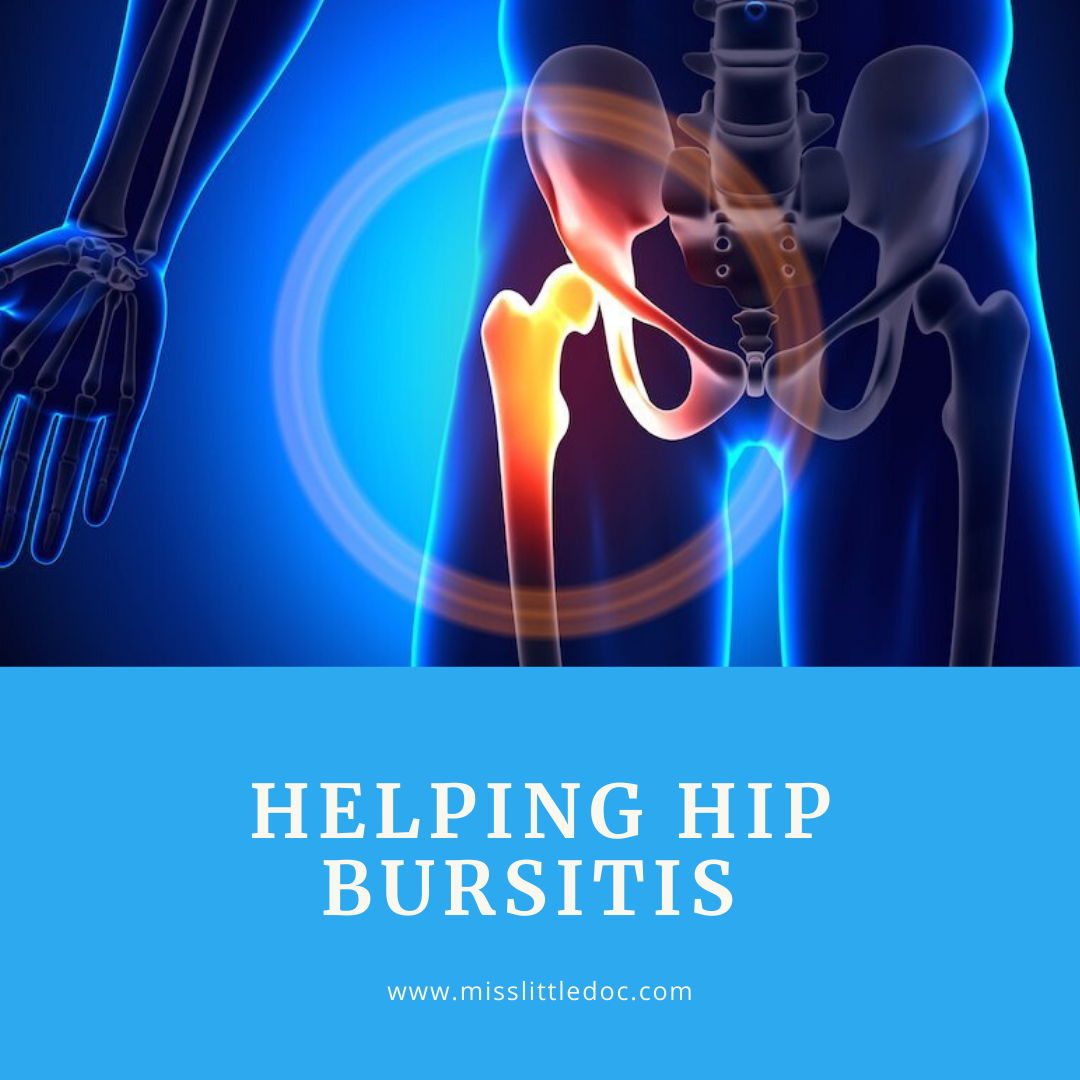Helping Hip Bursitis
Around the joints of your body are small, fluid-filled sacs called bursae. These sacs surround the tissue where the skin, muscles, or tendons meet the bones. Bursae provide lubrication and prevent friction and wear and tear when the joint is being used.
When these sacs become inflamed, they cause pain called bursitis. The main symptom of trochanteric bursitis (60% of cases) is pain at the hip. The pain usually extends to the outside of the thigh. Pain initially is described as sharp and intense, if left untreated the pain may become more of an ache and spread across a larger area of the hip.
Most often the pain is worse at night, when lying on the affected hip, and when getting up from a chair after being seated for a while. (When you lie down all the fluid in your body levels out, which can cause swelling=pain.) It also may get worse with prolonged walking, stair climbing, or squatting. This is due to overuse and aggravation of the bursa.
Causes
Causes of bursae to be inflamed can be from excessive running, exercise, and microtrauma over time caused by many things, or major trauma to the area from a fall or a car accident. Being active in sports can cause bursitis in the hip from overuse, such as dancing, track or soccer.
Some people develop hip bursitis simply from long hours of sitting. Sitting for long periods without moving or stretching causes the muscles to come shorter and tight, pulling across the bursa and irritating it.
Leg-length inequality (when one leg is shorter than the other) affects the way you walk, and can lead to irritation of a hip bursa as well as, low back, upper back, neck or any part of your body.

Treatment
There are a couple of things you can do for hip bursitis. Light stretching that involve the hip muscles can help with relaxing the muscles. Ice on the area of complaint can help reduce inflammation in the area and reducing pain. Heat is okay if it is a chronic long standing issue. Get adjusted by a chiropractor to make sure there isn’t another condition contributing to pain in the hip. Using natural anti-inflammatories such as turmeric, curcumin, cats claw, omega 3s, and ginger can help reduce the swelling. Avoid strenuous exercise until the issue is under control.
Chiropractic
Get checked by a chiropractor!!! While at your appointment the chiropractor will examine the hip and possibly take x-rays. There are several orthopedic tests they will put you through to determine the cause.
Cold laser produces an impulse of light that penetrates the skin. You can not feel anything while actually getting the cold laser done, but it helps with healing. It produces ATP (the food source) for cells, to aide in healing, along with producing endorphins (the feel good hormone). Cold laser is excellent on chronic conditions, bursitis, tendonitis, muscle strains and pains, along with wound healing and a whole list of other things!
Next, checking leg lengths is important to take the stress off of your hips, which can be corrected by the chiropractic adjustment. If there is a scoliosis present then a need for a shoe lift will be discussed.
If you have any questions about where your pain is coming from or how to treat it, see a chiropractor!
Dr. Lacey
Carder Chiropractic Clinic, INC.
El Reno, OK 73036



